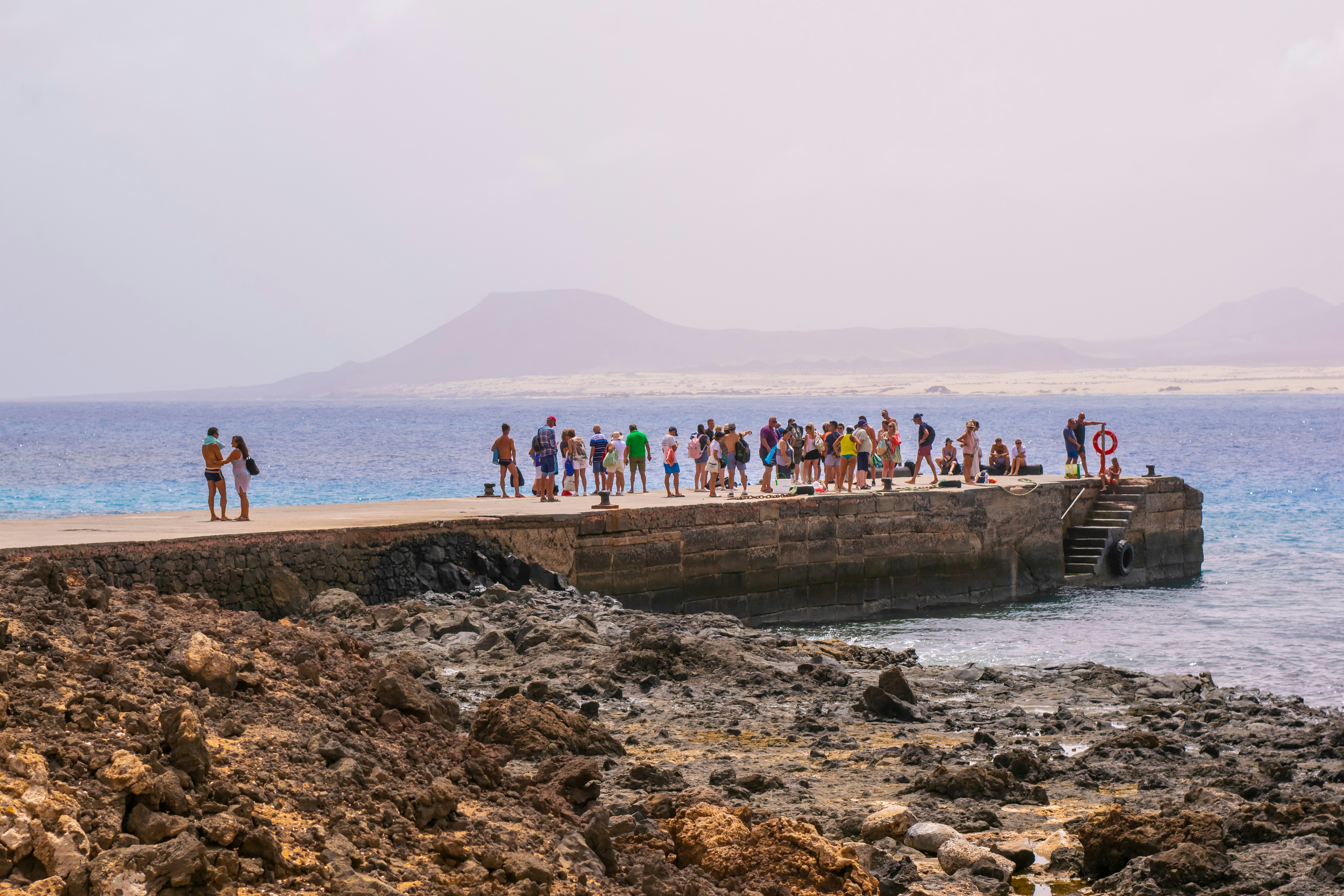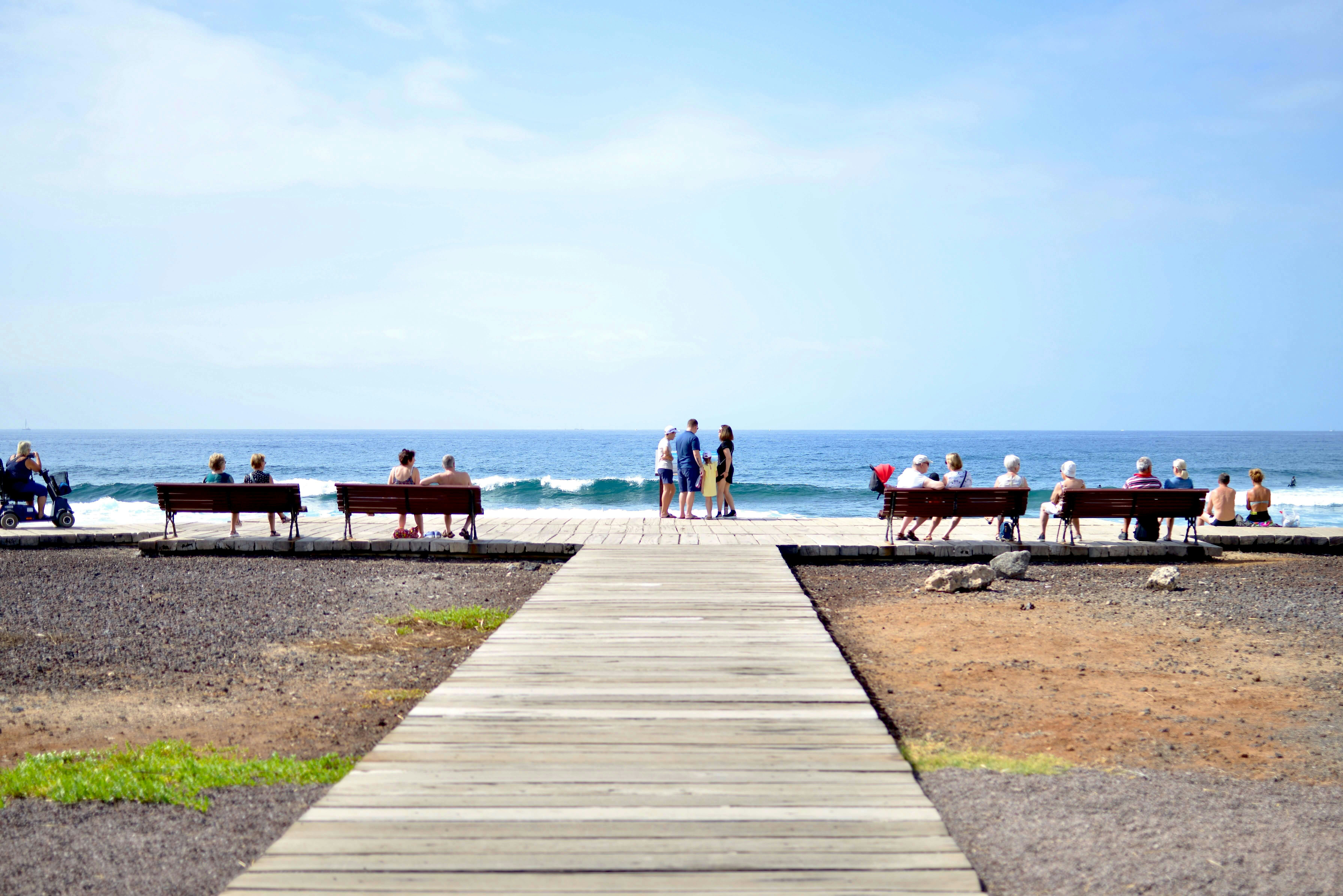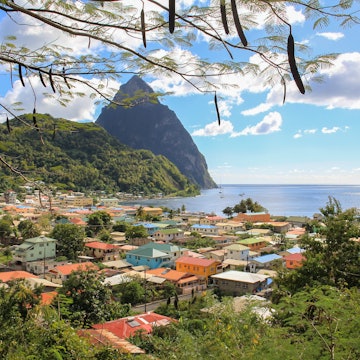

Playa de las Teresitas. Leoks/Shutterstock
Scattered in the Atlantic around 1400km (870 miles) southwest of mainland Spain, the eight beautifully different Canary Islands require some effort to reach. Once here, though, getting around this sun-washed, lava-sculpted joy of an archipelago is a breeze thanks to its reliable local bus and ferry networks, its array of handy interisland flight routes and its long-established tourism infrastructure.
When planning a trip to the Canaries, many people pick just one island to focus on, but hopping between them is perfectly possible, too, and a wonderful way to discover how richly varied the archipelago is. For active souls, hiking and biking trails thread between remote villages and lively cities, offering the chance to travel around entirely vehicle-free. No matter how you choose to explore, glimpses of jagged peaks above the clouds, eerily misty laurel forests, sparkling volcanic-sand beaches and other spectacular lunar-like landscapes are guaranteed.

Catch the bus for low-impact, budget-friendly explorations
All seven of the main Canary Islands have extensive, dependable public bus networks that travelers can easily tap into, from quick hops down the beach with a local crowd to more remote services linking small mountain villages. Here, the bus is known as la guagua, though people will still understand if you ask about el autobús (which is what it’s called in mainland Spain).
In general, the islands’ bus systems are designed primarily for local communities, which means schedules are often more limited on weekends, for example. So the key is to plan ahead and factor in a bit of flexibility. Each island has its own main bus company, including TITSA on Tenerife and Global on Gran Canaria. Most of these publish routes and schedules online. Keep in mind that the most popular bus routes – such as from Tenerife’s South Airport to the island capital Santa Cruz – often fill up quickly, so it’s best to arrive with plenty of time.
Single tickets are usually most useful and can generally be paid for directly on the bus. Some islands also now offer multiday bus passes for tourists, providing a slight discount per journey, which you’ll need to pre-buy at a bus station or online/via an app.
Tip: Most bus companies in the Canaries accept card payments, but not all, so it’s worth carrying some cash to cover tickets if necessary.

Enjoy the Canaries at your own pace by driving
Hiring a car is the most convenient way to explore the islands on your own time, with the freedom to make stops in offbeat destinations, escape the crowds between must-see attractions and maximize each day of your trip. Many of the Canaries’ most enchanting accommodation spots – such as converted mansions and vineyards – are hidden around the countryside and coast and can be tricky to reach without a car.
Small local car-hire companies such as Cicar and Pluscar are just as reliable as big international brands (and often more affordable). Book as far ahead as possible, as availability dwindles dramatically on all islands at peak times.
The narrow roads common in many mountainous areas of the Canary Islands aren’t for the faint-hearted – some can feel pretty vertiginous if you aren’t used to them. In Tenerife, overwhelming traffic is a growing issue, especially around the busy resort-filled south coast; some of the hugely popular natural beauty spots on the island, such as Punta de Teno, have recently banned private vehicles for conservation reasons.
If driving doesn’t appeal, taxis are widely available in most major destinations, though costs can quickly start to add up and in smaller places (like much of remote El Hierro) you often need to book ahead. Most taxis are metered, and card payments are widely accepted. Alternatively, many local tour operators run great-value excursions with door-to-door transport included, such as guided day trips to Tenerife’s Parque Nacional del Teide on which you whizz up through pine forests to above-cloud volcanoscapes by minivan.
Soak up the magical volcanic scenery by ferry
Frequent local ferry services offer a reliable, clean and leisurely way to hop between all the islands (though they aren’t always necessarily cheaper than flying). Routes vary hugely, from a quick 30-minute ferry linking southern Lanzarote with beach-loving Fuerteventura to a 2.5-hour journey between Tenerife and gorgeously green La Palma.
It’s best to book all tickets as far ahead as possible; the major ferry operators are Fred Olsen, Naviera Armas and Líneas Romero. If you’re hiring a car while in the Canaries, note that most rental companies won’t allow you to take it on the ferry between islands.
A standout boat trip is hopping over to tiny beach-rimmed Isla Graciosa, off northern Lanzarote, which is only accessible by half-hour ferry from Órzola (with soul-stirring cliff views all along the way). Ferries are also great for reaching the three western islands – La Palma, La Gomera and El Hierro – from Tenerife. It’s just a 50-minute journey across to lush La Gomera from Los Cristianos in southern Tenerife, making this route perfectly doable as a day trip too.

Keep active by exploring on foot or by bike
One of the great joys of the Canaries is discovering all those mesmerizing lunar landscapes at a gentle place. Hiking is a treat pretty much all over the archipelago, meaning walking holidays weaving together different towns and villages make a popular choice. This is especially the case on the smaller islands, like La Gomera and El Hierro, where rewarding hiking routes track between ancient laurel forests, plunging valleys, pastel-washed villages and, in spring, flower-filled meadows.
Keen cyclists can get around on two wheels in many places across the Canary Islands, too, but particularly on Lanzarote, where the sunny, volcano-studded setting draws top athletes from all over the world for training. Bike-hire companies operate in all the major tourist areas, whether you’re keen to rent a road bike for the week or just cycle along a seafront promenade at sunset. In Las Palmas, Gran Canaria’s beachy capital, a network of urban bike lanes has been developed over the last few years.
Hop quickly between islands by flying
Local flights are operated by Binter Canarias, Canary Fly and Air Europa, which between them cover all seven main islands with bus-like efficiency. For visitors, this means plenty of choice in terms of routes and timings, but you’ll still want to book ahead as planes are small and also often busy with local residents hopping between islands for work, admin and fun. On the flipside, sometimes you can swap onto an earlier flight if you arrive at the airport with plenty of time. For La Gomera and El Hierro, you’ll have to connect through Tenerife or Gran Canaria.

Accessible transportation in the Canary Islands
While the natural geography of the archipelago can present challenges for some travellers with disabilities, local authorities are making huge efforts to improve accessibility, particularly in beach destinations, which now often have wide, flat, ramp-accessible seafront promenades. Many local buses have wheelchair access and dedicated space for wheelchair users, and wheelchair-adapted taxis are widely available on advance booking.
Is Uber available in the Canary Islands?
At the time of writing, the only place in the Canaries where Uber is available is in southern Tenerife, around the lively coastal resorts of Los Cristianos, Playa de las Américas and Costa Adeje. A popular alternative is Pidetaxi, which you can sign up for and order taxis through.
















